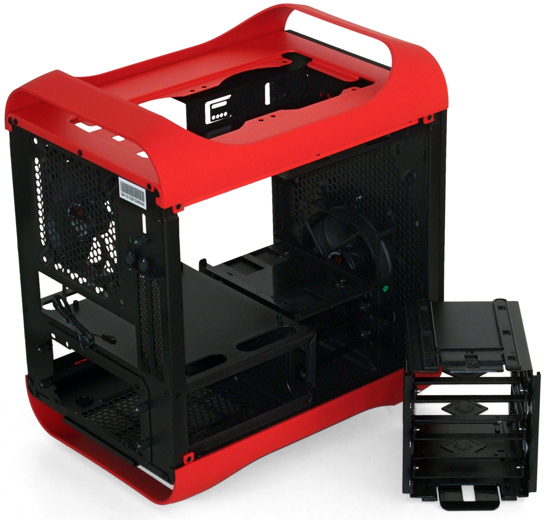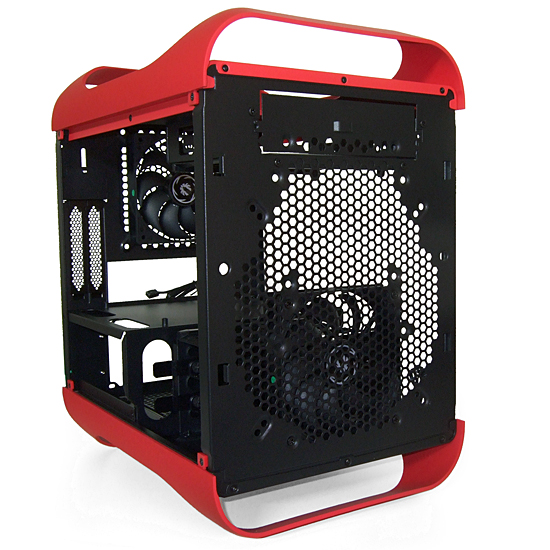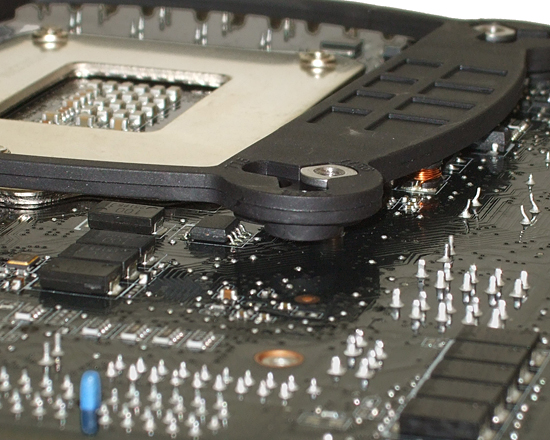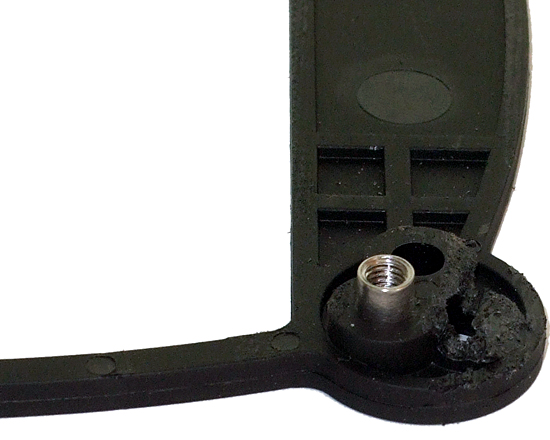System Builder Marathon, Q2 2013: $2500 Performance PC
Assembly Part 1: Finding The Right...Saw?
All of the parts in this build were carefully and specifically chosen to fit each other, so I take none of the blame for any required modifications. Follow along to see why!
For example, the Prodigy case’s top cage still fits with a long graphics card in place, but the tabs of its trays do not. I knew this assembly was removable, so it played no part in my component selections.
I would need to move the front fan up to the center position in order to get my desired airflow pathway, but the middle mount only supports 140 mm fans. This could have been problematic, except that a spare I had on-hand alleviated the issue altogether. Since Newegg lists my spare part, I simply added it to the build sheet.
Also notice that in the rear of the case, holes surround the stock 120 mm fan. Fitting a 140 mm fan here reduces the amount of air that flows around the fan, which could have otherwise hurt its performance.
The problem exists between Asus and Asetek, ODM of more than half of the closed-loop liquid cooler brands that I’ve tested. Its universal bracket isn’t quite universal; the bumps for LGA 775 and 1366 stick out far enough to touch surface-mounted components under the board. This is the same cooler and motherboard used in the famous Tiki, and nobody from any of the associated companies mentioned the need for an alternate support plate.
Some cooler manufactures send a different plate for each processor interface. Others use sliding mounts to fit multiple sockets. Either of those solutions work, because both of those solutions reduce the support plate’s contact area. Unfortunately, multi-hole universal plates collide with a couple of motherboard components that might easily be broken.
A sharp knife will cut into the plastic, but resistance increases as the knife is pushed in further. To avoid slipping and cutting the entire nub off, I tried using a file. The plastic was too slippery for the file to grab, so I tried a rasp. Eventually, I found that a fine hacksaw blade was my best cutting solution.
Get Tom's Hardware's best news and in-depth reviews, straight to your inbox.
This fitment issue is specific to this motherboard, but covers several types of CPU coolers. I’m starting to feel a little better about not handing Asus an award for this otherwise excellent product.
Current page: Assembly Part 1: Finding The Right...Saw?
Prev Page DRAM, SSD, And Mass Storage Next Page Assembly Part 2: Now, For All Of The Parts That Fit...




